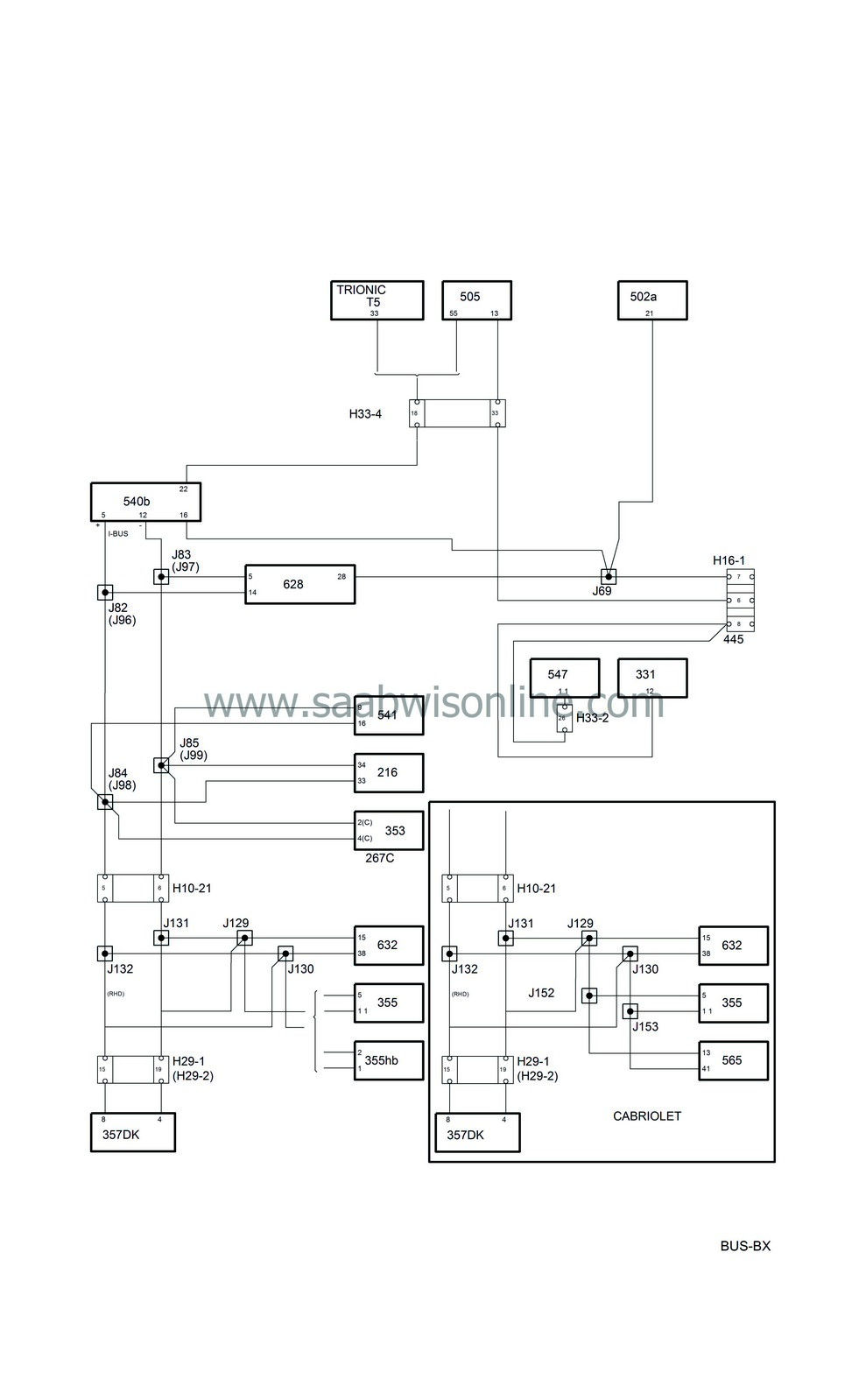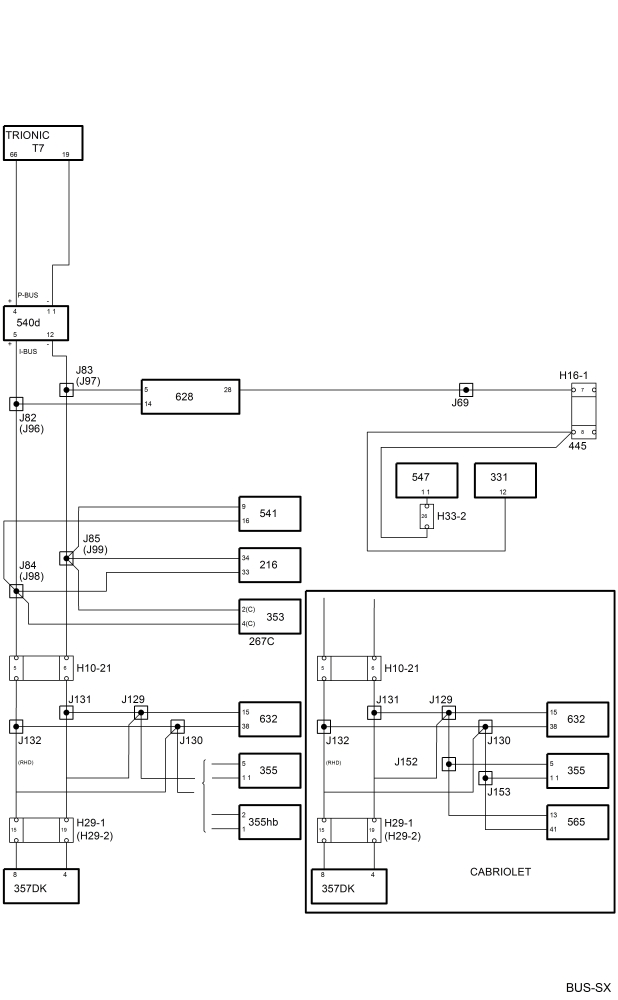Information
|
Values
|
Used by
|
The value depends on the following sensor input, signal or function
|
LH rear light broken
|
YES/NO
|
SID
|
Control module measurement of output current to lamps.
SID uses the information to display a CHECK message.
|
RH rear light broken
|
YES/NO
|
SID
|
Control module measurement of output current to lamps.
SID uses the information to display a CHECK message.
|
LH rear light
|
ON/OFF
|
DICE
|
Control module input supplied with current from light switch
DICE uses the information to calculate the position of the light switch.
|
RH rear light
|
ON/OFF
|
DICE
|
Control module input supplied with current from light switch
DICE uses the information to calculate the position of the light switch.
|
LH brake light broken
|
YES/NO
|
SID
|
Control module measurement of output current to lamp.
SID uses the information to display a CHECK message.
|
RH brake light broken
|
YES/NO
|
SID
|
Control module measurement of output current to lamp.
SID uses the information to display a CHECK message.
|
High-level brake light broken
|
YES/NO
|
SID
|
Control module measurement of output current to lamp.
SID uses the information to display a CHECK message.
|
Brake lights
|
ON / OFF
|
SID
|
Brake light switch
|
Sound
|
Sound information
|
SID
|
In connection with text message.
SID uses the information to generate sound for the seat belt warning function.
|
Driver's door
|
OPEN/CLOSED
|
MIU,
PSM,
DICE
|
Door switch.
MIU uses the information to turn on the open door indicator.
PSM uses the information to control the function for the electrically adjustable front seat.
DICE uses the information to turn on the interior light.
|
Passenger door
|
OPEN/CLOSED
|
MIU,
PSM, DICE
|
Door switch.
MIU uses the information to turn on the open door indicator.
PSM uses the information to control the function for the electrically adjustable front seat.
DICE uses the information to turn on the interior light.
|
LH rear door
|
OPEN/CLOSED
|
MIU,
DICE
|
Door switch.
MIU uses the information to turn on the open door indicator.
DICE uses the information to turn on the interior light.
|
RH rear door
|
OPEN/CLOSED
|
MIU,
DICE
|
Door switch.
MIU uses the information to turn on the open door indicator.
DICE uses the information to turn on the interior light.
|
Boot lid
|
OPEN/CLOSED
|
MIU,
DICE,
STC
|
Lid switch.
MIU uses the information to turn on the luggage compartment open indicator.
DICE uses the information to turn on the luggage compartment light.
|
Test brake lights
|
ON/OFF
|
SID
|
Control module programming and brake light switch.
SID informs the driver via a CHECK message to press the brake pedal.
|
Horn
|
0: 6: 42 ms
|
SID
|
Anti-theft alarm function and central locking system function.
SID uses the information to activate the horn relay when the car is TSL locked.
|
Hazard flashers
|
ON/OFF
|
DICE
|
Anti-theft alarm function and central locking system function.
DICE uses the information to activate the hazard flashers when the anti-theft alarm is tripped.
|
Text message
|
|
SID
|
Anti-theft alarm function and central locking system function.
SID uses the information to display text messages for the TWICE functions.
|
Steering wheel location
|
LHD/RHD
|
ACC,
MIU
|
Control module programming.
ACC uses the information to detect the driver's zone.
MIU uses the information to detect the driver's door.
|
Immobilizer
|
ON/OFF
|
MIU (Cars with B204)
|
Immobilizer function.
MIU uses the information to allow the engine to start.
|
Key correct
|
ON/OFF
|
Audio
|
Immobilizer function.
The audio system uses the information for theft security.
|
Central locking system
|
UNLOCKED/LOCKED
|
DICE
|
Central locking system function.
DICE uses the information to turn on the interior light when the car is unlocked.
|
Diagnostics
|
|
DICE/diagnostic tool
|
Control module should be powered and the bus leads intact.
See Bus and diagnostics communication

|







